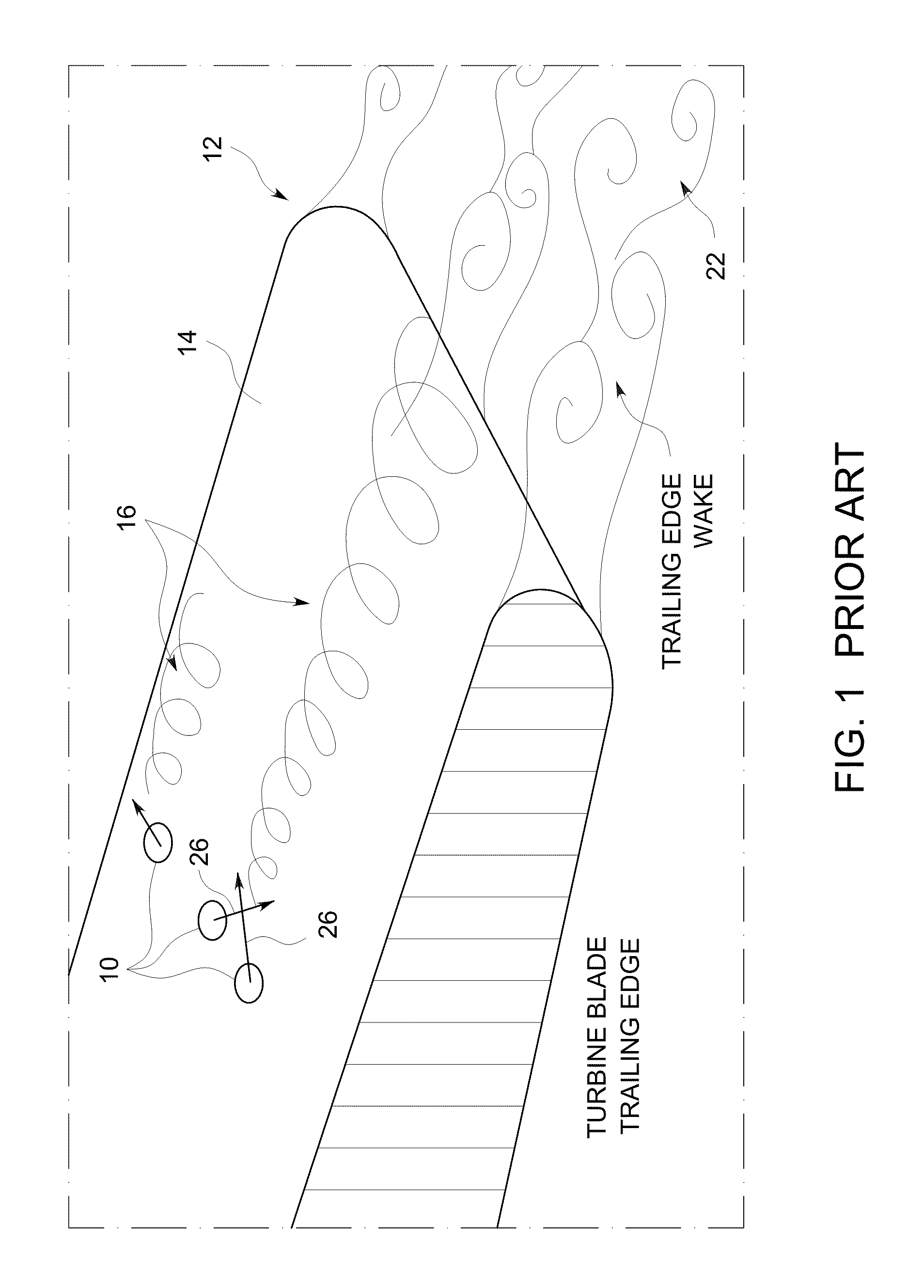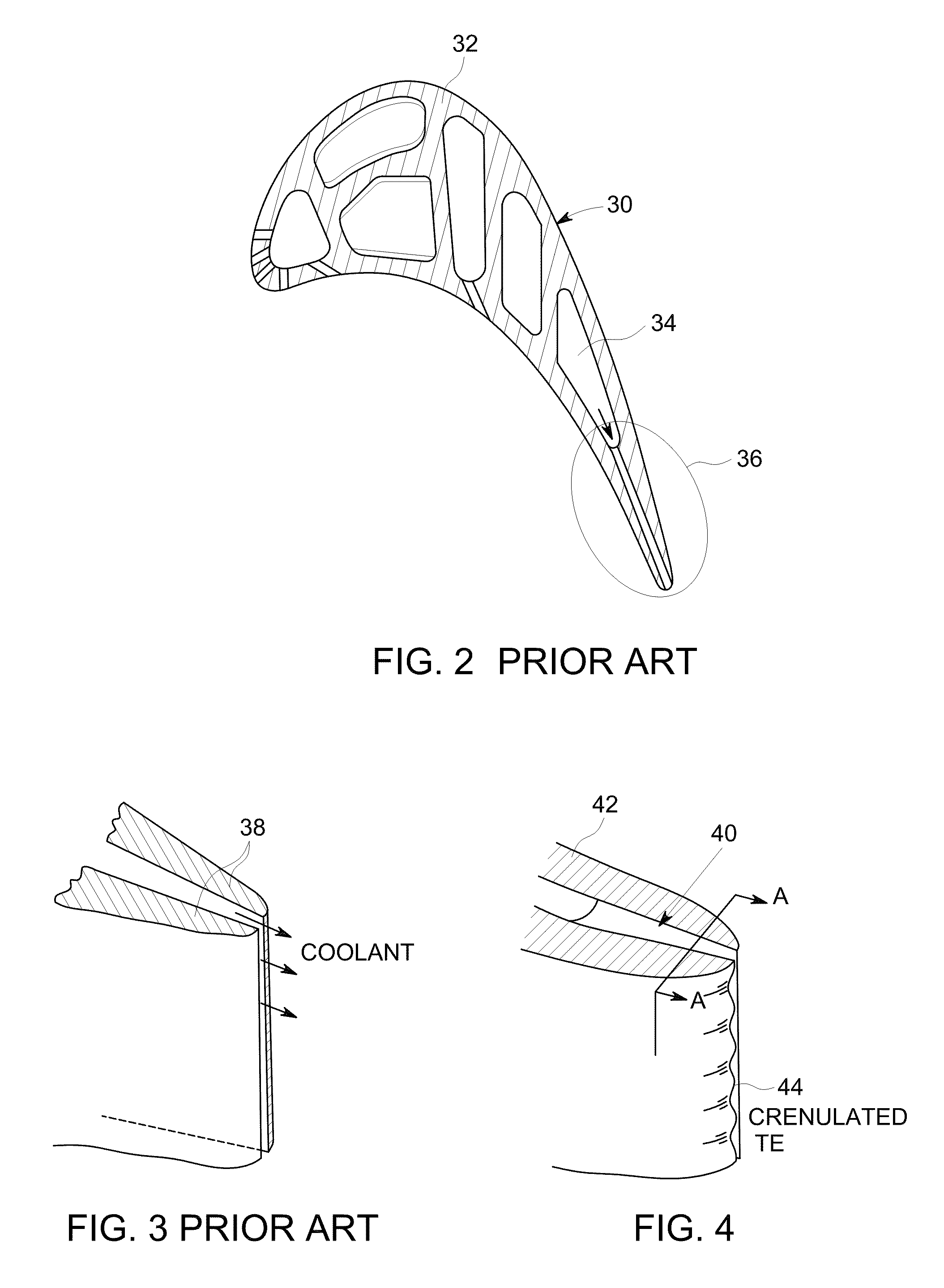System and method for enhanced turbine wake mixing via fluidic-generated vortices
a technology of enhanced turbine wake and fluidic generated vortice, which is applied in the direction of liquid fuel engines, vessel construction, marine propulsion, etc., can solve the problems of overheating of the pressure side, higher process losses, and temperature deficits coming off the film-cooled turbine vanes and blades, so as to reduce the segregation effect of thermal wake, enhance mixing, and reduce aerodynamic losses
- Summary
- Abstract
- Description
- Claims
- Application Information
AI Technical Summary
Benefits of technology
Problems solved by technology
Method used
Image
Examples
Embodiment Construction
[0037]According to particular embodiments such as those depicted in FIGS. 10-12 and 17-18 described in further detail herein, cooling hole wake mixing elements are disposed in a substantially arcuate thick trailing edge of a high pressure turbine (HPT) blade or vane to provide a trailing edge wake mixing scheme. Unlike conventional trailing edge wake mixing schemes that inject fluid parallel to the main flow path, these embodiments advantageously inject fluid at pitch and / or yaw angles to the main flow path to generate the desired streamwise vortices described in further detail herein.
[0038]According to other embodiments such as those depicted in FIGS. 4-8 and 19-20 described in further detail herein, chevron trailing edges are provided on the pressure side, suction side, or both the pressure side and suction side of a high pressure turbine blade or vane to provide a pressure side bleed slot trailing edge wake mixing scheme.
[0039]According to yet other embodiments, fluid injection e...
PUM
 Login to View More
Login to View More Abstract
Description
Claims
Application Information
 Login to View More
Login to View More - R&D
- Intellectual Property
- Life Sciences
- Materials
- Tech Scout
- Unparalleled Data Quality
- Higher Quality Content
- 60% Fewer Hallucinations
Browse by: Latest US Patents, China's latest patents, Technical Efficacy Thesaurus, Application Domain, Technology Topic, Popular Technical Reports.
© 2025 PatSnap. All rights reserved.Legal|Privacy policy|Modern Slavery Act Transparency Statement|Sitemap|About US| Contact US: help@patsnap.com



